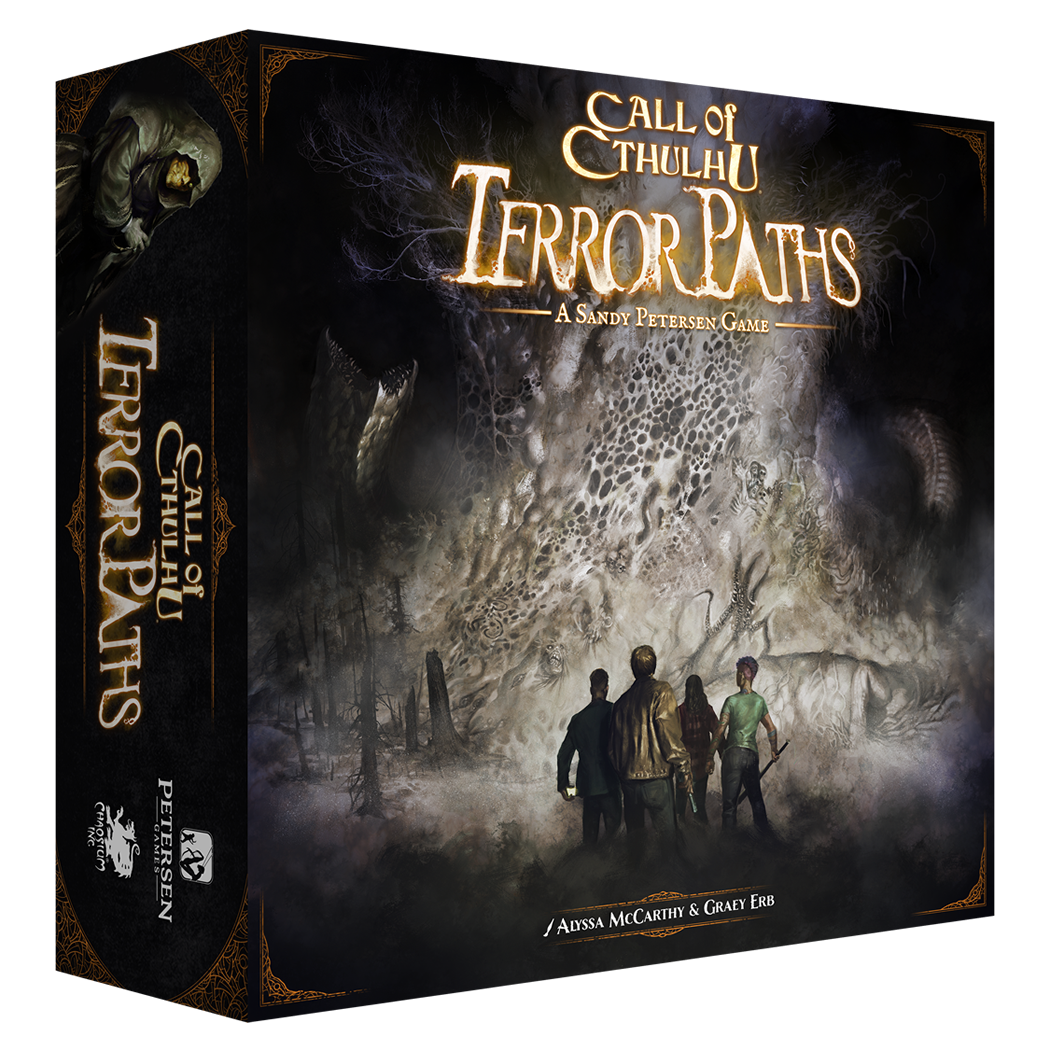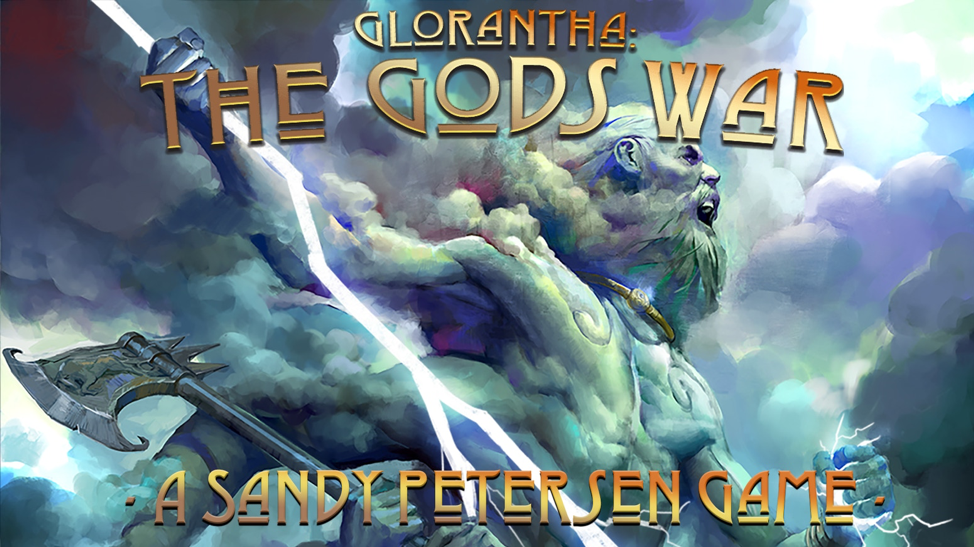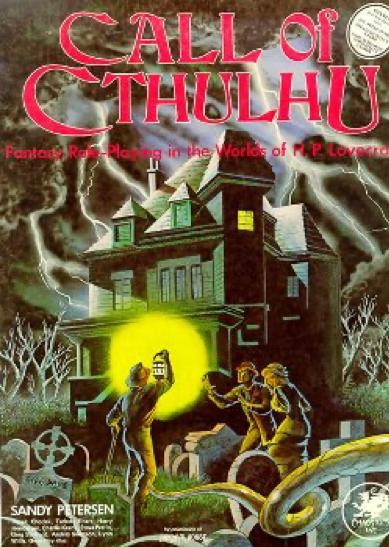How to be a Game Designer
Designer Diary by Sandy Petersen
By Sandy Petersen
I am a professional game designer. “Professional” in the sense that this is my primary source of income.
Game design is not a fundamental skill of humans. Some of us are better at drawing pictures than others. Some are better at throwing things, or speaking, or math, or communicating with children. Of course, you can get better at any of these tasks with experience and training, but this doesn’t remove the fact that some of us are simply more talented to begin with.
To succeed at being a game designer you need more than brains. In this article, I single out three personality traits features which I think are useful for a game designer. If you lack one or more of these traits, I’m not saying your design would fail – but you’ll have to work harder in other areas to make a success.
Trait One: Obsession
To design games, you must really, really like games. I design games all day long. Yet my favorite relaxation activity on weekends is (you guessed it) playing games. At family reunions, Uncle Sandy pulls out games or invents games for the extended family to play. When I engage in light conversation with another couple at a restaurant, I talk about games. When I watch a movie, I ponder how some effect or plot point could be modeled in a game. My mind is steeped in games. You might not be as obsessed as me, nor should you be, but to be a designer you do need to love games so much that you frequently deprive yourself of other pleasures to focus on games.
Trait Two: Creativity
I am sure you are thinking “duh”, but there’s more to it. You see, there are lots of ways to be creative. Let me give you an example. I used to work with Greg Stafford, another famous designer sadly now passed away. We were both creative, but in highly different ways. Greg’s creativity stemmed from the root of his subconscious. He could invent things out of whole cloth – this included the entire fantasy universe of Glorantha.
I worked closely with Greg, but I am not his kind of creative. Instead, I am a syncretive designer. I pick and take ideas from others, matching these together to make a coherent new whole. In our collaboration, first Greg would come up with some crazy idea. Then I would listen to him, remember some idea he had a year ago on a related topic, and figure out how these both worked together. I also carried things to a logical conclusion, which he often hadn’t considered
As an example, Greg said the Red Moon in Glorantha has phases, just like earth’s moon. But the Red Moon doesn’t move – it always sits in the same place overhead. So, I pondered, “Why would this moon have phases?” In Glorantha, the sun orbits the world in Ptolemaic fashion. There is no outside cosmos. So, what makes the Red Moon change appearance? I conjectured, “perhaps the moon is dying and being reborn. That’s what causes the phases.” Later, I suggested, “perhaps an unknown dark object orbits the moon, casting a shadow on it”. Well, Greg used both those ideas at different times, apparently forgetting which he liked better. Perhaps that ideas could be combined? I wondered – maybe an unknown dark object orbits the moon whose shadow kills the moon as it passes over it, only to revive when it passes.
Greg invented wacky cults and religions all the time. Then I had to transform them into something playable for a game. I was always focused on what is FUN for players. Greg just liked creating new material – in his mind, simply knowing about his world’s depth and features was enjoyable all on its own, and I’m not saying he was wrong. In the end, the combining of his fount of energy and my focus on playability led to some terrific game ideas.
This shows that two extremely different designers could be creative in different ways, and yet forge a coherent and great game universe which lives on. Similarly, you can be creative in more than one way.
Trait Three: Deliver!
Video game players are often stereotyped as bums who can’t move out of mom’s basement, get a date, or get a job. Well of course these people exist. But they’re not designers. Designers are self-starters. You must aggressively pursue your design, or it will never reach fruition. You need confidence in your project. This doesn’t mean you aren’t willing to take feedback.
Why did Greg do this? At the time I had no idea. Later he told me that it was for three things.
First, I was a huge fan of Lovecraft. I was Obsessed. He didn’t care about Lovecraft himself, but he knew he needed a Lovecraft fan to write the game.
Second, he knew I was creative and could write since I’d already done work that he liked.
But third and most important, I had never missed a deadline. Ever. This meant Greg trusted me. Of these three traits, the most critical was Greg valued the fact that he knew I’d deliver. And this makes sense. Because it doesn’t matter how obsessed or creative you are if your game is never completed, or only completed in a slipshod manner. The world is full of creative, intelligent people with dead-end jobs and no visible future, because they have never learned how to capture their imagination and apply that creativity to a project.
About Sandy Petersen
Sandy got his start in the game industry at Chaosium in 1980, working on tabletop roleplaying games. His best-known work from that time is the cult game Call of Cthulhu, which has been translated into many languages and is still played worldwide.
He also worked on many other published projects, such as Runequest, Stormbringer, Elfquest and even the Ghostbusters RPG, and was instrumental in the creation of dozens of scenario packs and expansions. He also acted as developer on the original Arkham Horror board game. In 2013 he founded Petersen Games which has released a series of highly successful boardgame projects, including The Gods War, Evil High Priest, and the much-admired Cthulhu Wars. His games have sold tens of millions of copies worldwide, and he has received dozens of awards from the game industry.




